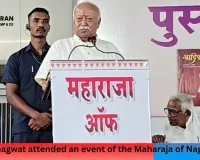Air taxis likely to take off in Delhi in 2028
Digital Desk

Air taxis are expected to start flying in India by 2028, offering the ability to take off and land from virtually anywhere. Mohali-based startup Nalwa Aero has developed an indigenous eVTOL (Electric Vertical Take-off and Landing) air taxi, which has received the Design Organisation Approval (DOA) certificate from the DGCA.
Nalwa Aero CEO Kuljeet Singh Sandhu said the idea originated during the COVID-19 pandemic, when a friend highlighted the lack of emergency medical evacuation options and nearby helipads.

We wanted to create a machine that could vertically take off and land from anywhere

he explained.
The design phase of the air taxi is complete, and a sub-scale prototype is expected next month. The project aims to provide affordable air mobility for the middle and lower-middle class, with an initial launch in Delhi-NCR.
Currently, travel from IGI Airport to Anand Vihar, Noida, Ghaziabad, or Panipat takes 1 to 3 hours by road. With the eVTOL air taxi, the same journey can be completed in just 10 to 12 minutes.
The estimated initial fare from IGI Airport to Anand Vihar is around ₹500 per person.
Following Delhi, the air taxis are planned for other major metro cities, including Mumbai, Kolkata, and Bangalore.
8 Rotor system, won't crash
According to Nalwa Aero CEO Kuljeet Singh Sandhu, the eVTOL air taxi features eight rotor systems. Even if two rotors fail, the aircraft can continue flying safely, and a safe landing is possible even if three stop working, making it safer than a traditional helicopter.
The eVTOL is designed to be ten times quieter than a helicopter and over 90% cheaper in operating costs. While a helicopter can cost up to ₹5 lakh per hour to operate, the eVTOL’s costs are expected to be less than 10% of that.
The company is developing these aircraft in compliance with Federal Aviation Administration (FAA) and European Union Aviation Safety Agency (EASA) regulations.
Currently, sandbox trial sites for the eVTOL are being prepared in Gujarat and Andhra Pradesh, with the World Economic Forum partnering in these initiatives.
The technological built suggests taxi will fly up to 300 km on a single charge
Nalwa Aero is working on two primary eVTOL models. The first is powered by a lithium-ion battery, capable of flying up to 90 minutes or covering 300 km on a single charge, with fast charging taking just 50 minutes. The second model uses a hydrogen fuel cell and offers a range of up to 800 km.
The company is developing three main variants: a passenger air taxi seating 5 to 7 people, a cargo version, and an ambulance model accommodating two stretchers. Additional projects in progress include aircraft for air tourism, surveillance and reconnaissance, and a specialized Medivac (medical evacuation) version.
Can be booked like a taxi
Nalwa Aero's eVTOL is India's first and most advanced air taxi technology. Years of research has gone into its advanced flying computer, tilting propulsion system and box-wing design.
The aircraft can lift 4000 kg maximum take-off weight and 1000 kg payload. The cruise speed is 350 km/h which can go up to 400. This is suitable for all sectors including air taxi, medical ambulance, defense surveillance, search and rescue and cargo transport.
- Zero Carbon: No ATF, will fly on electricity/hydrogen. Zero carbon, low cost and noise.
- Vertical Technology: No waiting on runway, direct vertical takeoff and landing possible. Can takeoff and land from building rooftops.
- Fly by Wire: Digital control in pilot's hands, everything computer controlled.
- India Make: Developed under indigenous design and Make in India mission. 60% of technology used is domestic.
- Jobs: Thousands of jobs will be created in new skills, pilot training, maintenance and charging infrastructure.
- Long-term Impact: Will save time in medical emergencies. Can transport patients to appropriate hospitals quickly at low cost.
Future: Flight without pilot possible after three years Nalwa Aero has achieved parallel success in both pilot-based and autonomous (pilotless) flight technologies. For the first 3 years, passenger flights will remain pilot-based. Cargo flights can already be started as autonomous operations.
After three years, autonomous passenger flights will be considered. Autonomous passenger flights will not begin until all certification requirements of the Directorate General of Civil Aviation are met.
Infrastructure: Vertiports can be built at metro stations
Existing urban infrastructure can be adapted to serve as vertiports for eVTOL air taxis. Metro station rooftops and large buildings can accommodate landings, making integration into cities easier.
The government is developing 1,000 helipads spaced every 50 km, which could also be converted into vertiports. While helicopters require 20x25 meters of space for landing, eVTOLs need just 12x12 meters, allowing for more flexible and widespread deployment.




1.jpg)






